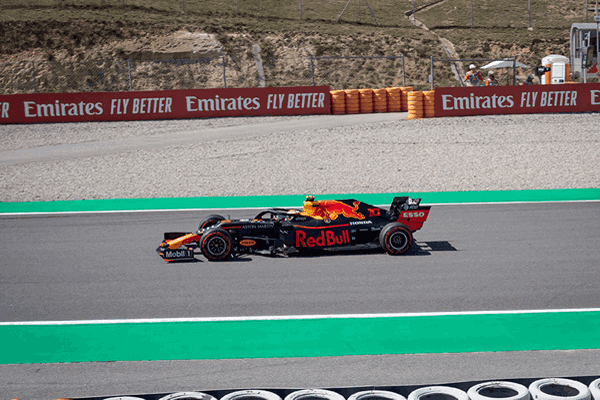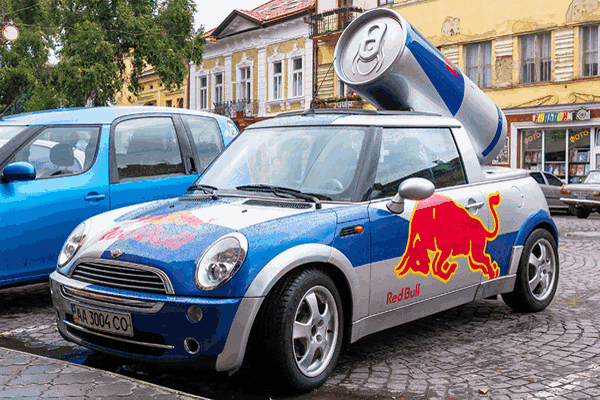
TLDR:
Red Bull has performed a magic trick in transforming an energy drink into an exciting experience.
So What?
Red Bull’s customer engagement strategy works to elevate any mundane product into something more than it really is. The same approach can be applied to other products.
Introduction
Suppose you had to market a new soft drink that had an unusual taste and came in a tiny can. Would you focus on the taste? Or the size of the can?
Of course not. Red Bull comes in a tiny can and has a mysterious flavor. Their marketing doesn’t focus on the product itself. Instead, it focuses on people and activities related to the brand image they want to project.
Some of Red Bull’s customer engagement strategies include:
- Lots of video and images
- Building mental associations with extreme sports
- Experiential marketing
- Tapping into influencers
- Focusing less on traditional advertising
Red Bull’s strategy works. In 2021, the company was worth almost $16 billion.

Blasting the Internet with Image and Video Content
The medium is the message. Red Bull chooses to publish primarily images and videos because visual media carries strong emotional messages. This helps load their product with emotional associations.
Images and videos contain lights, color, and action. They attract your attention and induce excitement. These are precisely the qualities that Red Bull tries to create.
Take a look at this video from Red Bull:
Only a limited amount of Red Bull’s content output is text-based. This means you never have to slow down in order to grasp the message — and Red Bull is all about speed. Despite having 240 characters to work with, almost all of its Twitter feed is actually images and videos.
Building Mental Associations with Extreme Sports
Red Bull does not associate itself with a nice quiet game like golf or chess. Instead, Red Bull is aligned with loud, exciting, fast-paced events, like snowboarding or surfing.
Actually, Red Bull is just a yellow energy drink. But their marketing hides that fact. The mental images most people associate with Red Bull are really not about the product at all.
Building mental associations like this helps in a few ways:
- It designates an ideal customer base.
- It appeals to aspirants to that customer base.
- It makes the product more than what it really is.
By associating itself with extreme sports, Red Bull picks out an ideal customer base: extreme athletes. All of Red Bull’s marketing positions the product as the drink of wild snowboarders and paragliders.
Because of this association, Red Bull appeals to people who want to be extreme athletes. Even if they never get off the couch, Red Bull offers them the feeling of being like those snowboarders or surfers they admire.
The strong mental associations mean that customers aren’t really buying a drink. They’re buying a lifestyle, or at least the image of one.
Red Bull is not that different from any other energy drink for most practical intents and purposes. After two or three, if someone swapped your drink with a Monster energy drink, you might not even notice the difference. In that case, you are literally only buying the advertising.
Experiential Marketing
Red Bull doesn’t just market itself online. It enhances its association with extreme sports by sponsoring and being visible at extreme sports events.
Take the Red Bull Flugtag, for example:
Other Red Bull experiences include:
- Red Bull Cliff Diving
- Red Bull Road Rampage
- Motorcycle Grand Prix of the Americas
These unique, fast-paced events are the image that Red Bull tries to present. What matters is the experience, not the drink itself. By becoming an experience, the drink transcends its material form.
Tapping Into Influencers
Influencers are an obvious good choice for Red Bull for three reasons:
- They transform Red Bull into a person.
- They feed into Red Bull’s “extreme” image.
- They add a layer of interactivity between Red Bull and its customers.
By tapping influencers, you get real faces to promote your brand. This de-emphasizes the product itself and turns it into a person.
Red Bull’s influencers are mostly extreme athletes like pilots or snowboarders. This feeds into their image as an ”extreme” brand.
Influencers interact with their audience. They each have a smaller, more niche audience than Red Bull, the company. This means they have more personalized ways of selling the product specifically to their audience.
Focus Less on Traditional Advertising
Red Bull only spends 20% of its marketing budget on traditional advertising. The remaining 80% goes to the tactics mentioned above:
- Extreme sports events
- High-quality video and image content
- Influencer experiences
Why is this good for Red Bull? Here are a few reasons:
- Red Bull does not want to be a “traditional” company.
- Traditional advertising emphasizes the benefits of the actual product.
- Word of mouth can go a long way when you sponsor crazy events.
Traditional advertising might have a hard time selling a weird-tasting drink that comes in a small can. While Red Bull has benefits, they are primarily intangible — an adrenaline rush or an association with extreme sports.

How to Build a Customer Engagement Strategy like Red Bull’s
Red Bull’s strategy works for products that are not remarkable on their own. The point of the strategy is to produce a magic trick- a transformation of the product into something more exciting.
If your product is hard to sell on its own merits, traditional advertising may not work for you. Consider Red Bull’s strategy.
First, identify your ideal customer. What do they do? What do they wear? Who do they hang out with?
Your ideal customer will form the core of your strategy. Everything else in your plan has to associate your product with that customer. That way, you can sell to people like your ideal customer, and also people who aspire to their lifestyle.
Then, associate your product with your ideal customer in every way possible. Get influencers who are like your ideal customer. Sponsor or hold events that they go to. Post on social media about their lifestyle.
Also, consider the type of content you produce. Red Bull produces mostly images and videos because those media carry feelings of excitement and fun. But if you want your product to have a more quiet, intellectual feel, consider using long-form blog posts instead.
Media Shower helps brands build customer engagement strategies to fit their needs. We understand the ins and outs of the strategies employed by companies as diverse as Krispy Kreme, Starbucks, or Red Bull. This helps us to craft a unique plan for you. Try us for free — click here.
